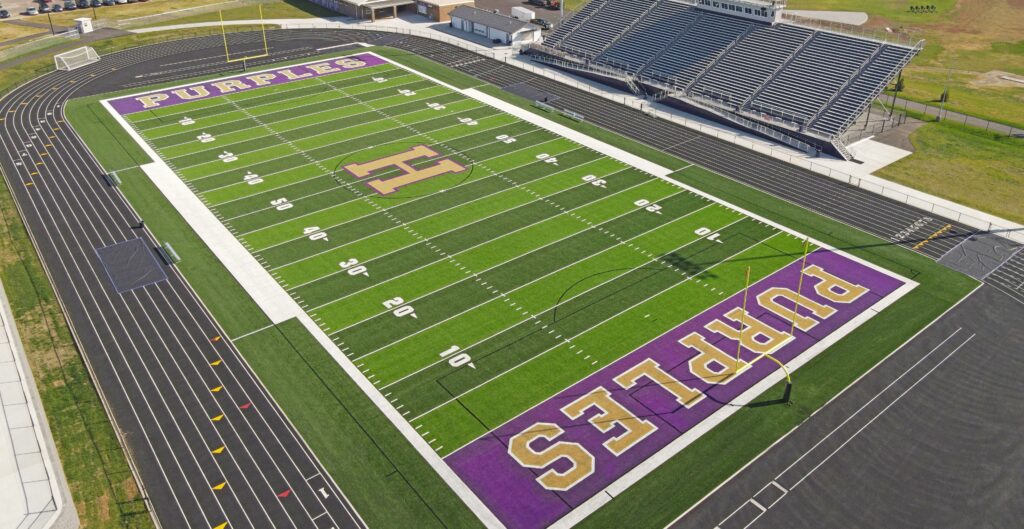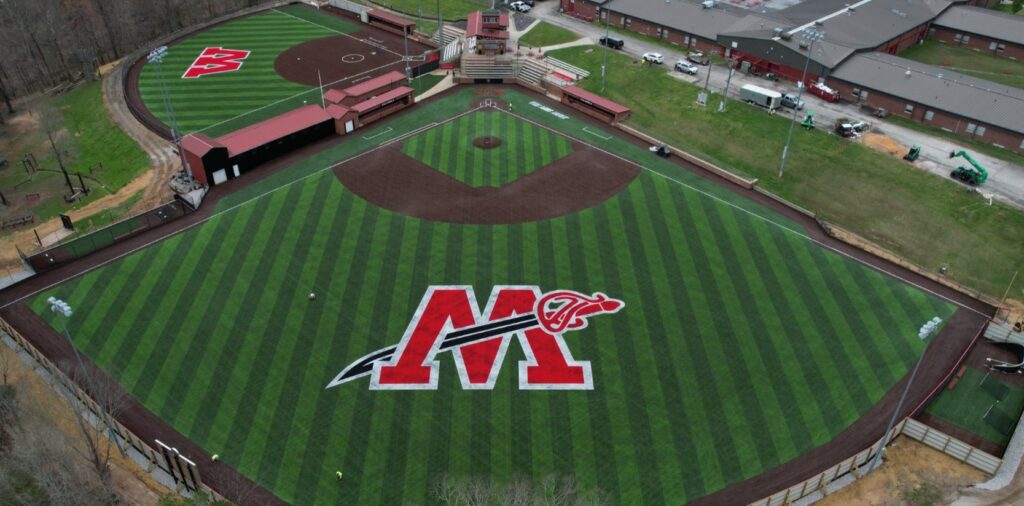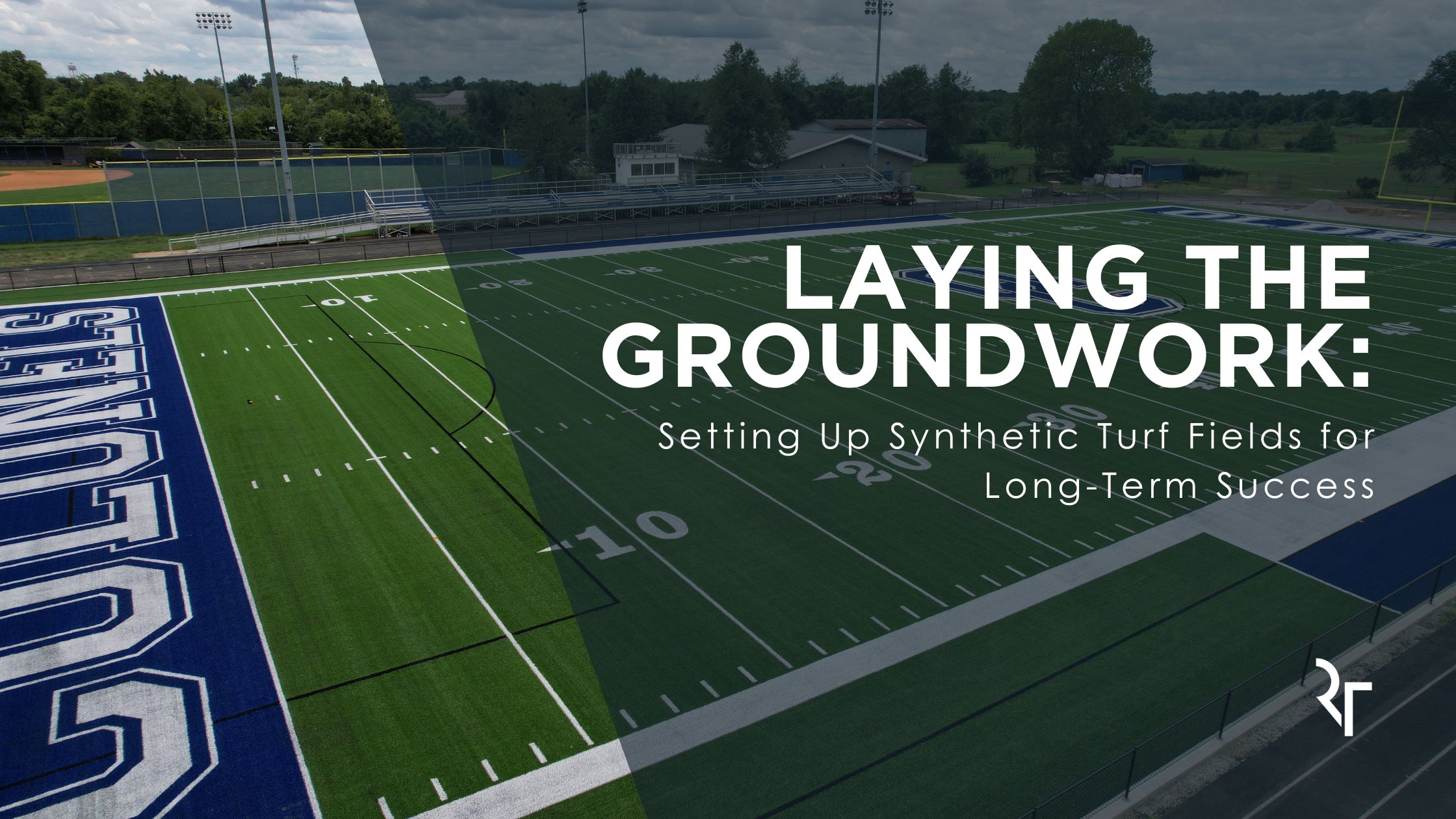One of the many advantages of synthetic turf is its lower maintenance demands compared to natural grass. It offers a durable, all-weather playing surface that supports high levels of use—making it a smart choice for schools and communities.
But to get the most out of that investment, routine care is still important. Regular maintenance helps protect the field’s performance, safety, appearance, and warranty—ensuring it continues to serve students and athletes for years to come.

What Does Turf Maintenance Involve?
Even the most durable fields benefit from consistent upkeep. Here’s what that looks like:
- Regular Grooming: Drag brushes or grooming equipment should be used every two weeks during use or every 100 hours of play to stand the fibers up, redistribute infill, and level the surface. Spot grooming in high-traffic areas—like goal mouths and pitching mounds—should happen after each use.
- Debris Removal: Gum, seeds, and trash can damage the surface over time. Full-field sweepers or magnetic bars help keep the turf clean and safe.
- Professional Maintenance: Once a year, bring in a professional to decompact infill, disinfect the field, and make any necessary seam or surface repairs. A service contract is often the best way to ensure this happens on schedule.
- Seasonal Inspections: Before and after each season, inspect seams, inlays, and infill levels. Regular testing can help monitor performance and safety standards like shock attenuation, energy restitution, and rotational resistance.
Don’t Forget: Protection Matters
Turf fields are often used for more than just sports—graduation ceremonies, concerts, and equipment access can all take a toll. Using rigid, weight-distributing protection during non-athletic events is essential to avoid damage or voiding your warranty.

Final Tips
- Always follow your turf manufacturer’s maintenance and warranty guidelines
- Train coaches and facility staff on basic turf care
- Keep a log of all maintenance activities
- Avoid grooming on game days—and go slow with equipment
When properly maintained, synthetic turf fields provide years of reliable performance and a high-quality experience for athletes and communities alike.
Content by Laith Ross






